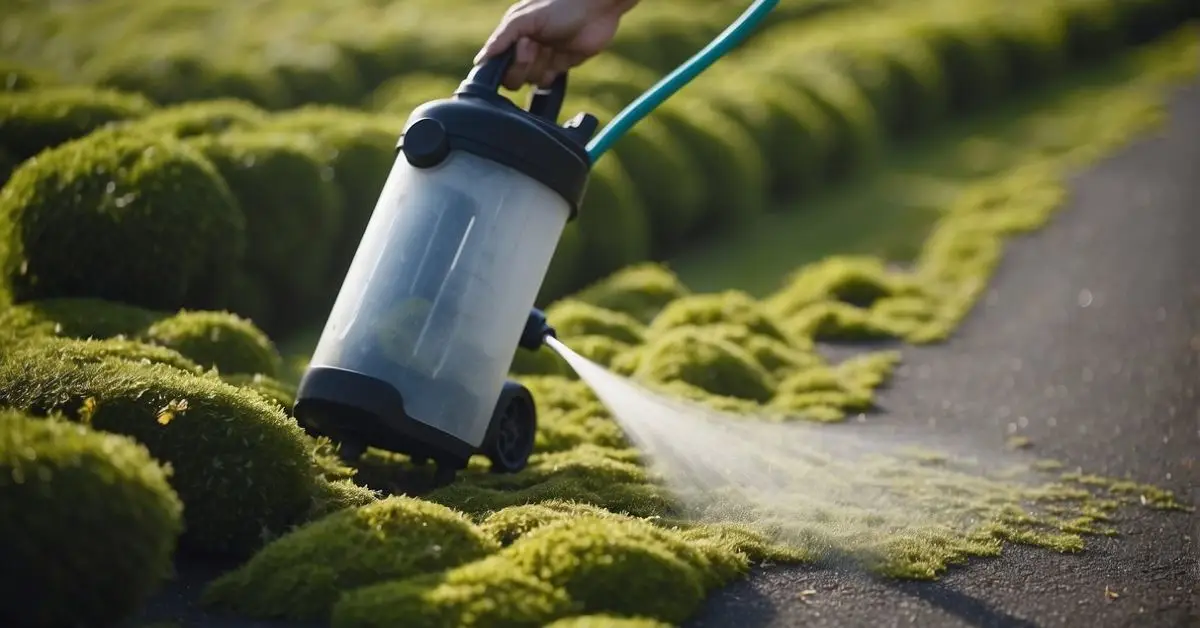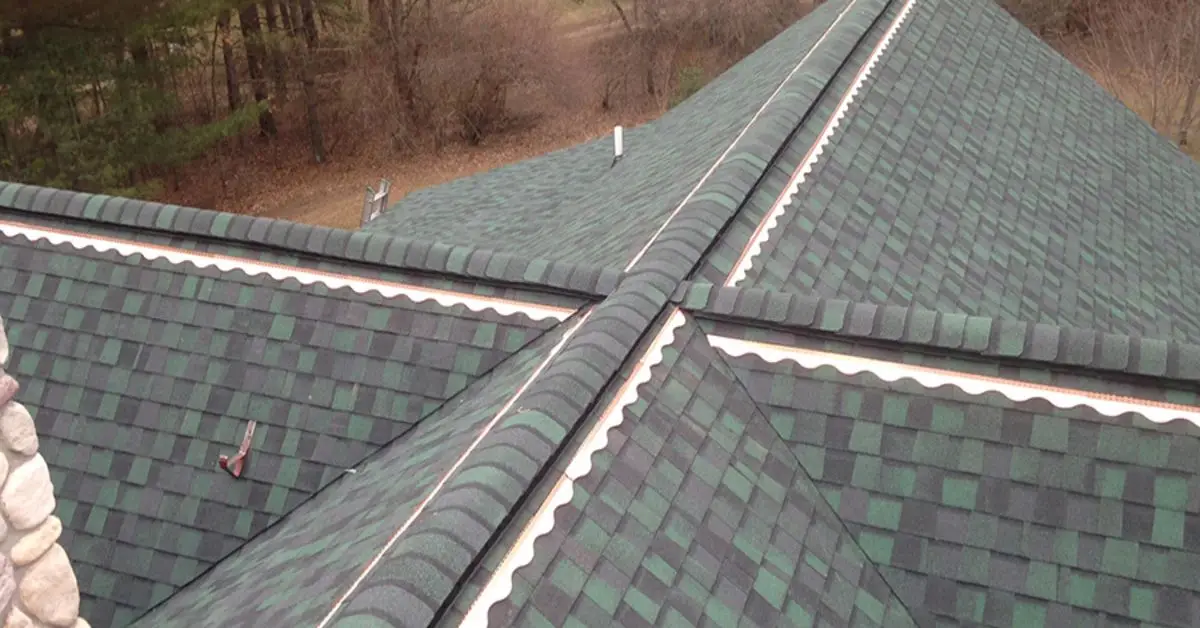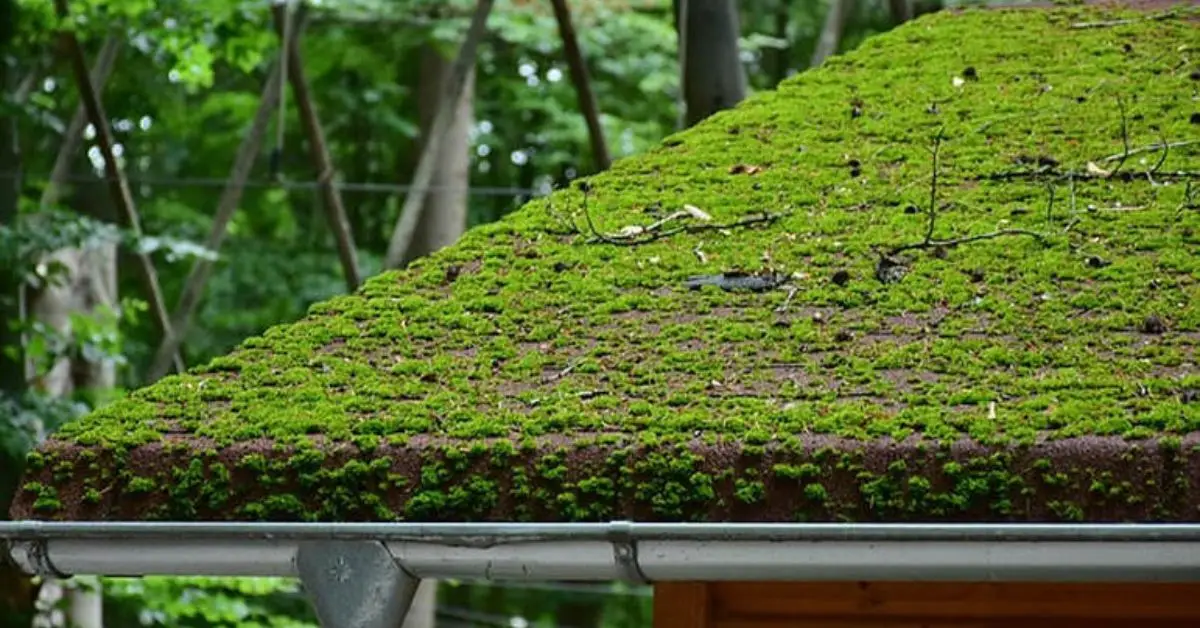Stop Roof Moss in Its Tracks: 5 Tips You Should Try Today
If you’ve noticed green streaks or patches creeping across your roof, you’re not alone. Moss on your roof is more than just an eyesore — it’s a sign of deeper issues.
Over time, if left untreated, moss can cause serious damage. It can eat away at shingles, block gutters, and even lead to leaks in your home. That means expensive repairs down the line, which no one wants to face.
But here’s the good news: you don’t have to hire an expensive contractor to fix the problem. With a few simple, DIY tricks, you can easily remove the moss and prevent it from coming back.
In this article, I’m going to show you five effective hacks to keep your roof clean and moss-free. By the end, you’ll know exactly how to protect your roof and save money on costly repairs. Let’s dive in!
Why Moss Grows on Roofs & the Damage It Can Cause
Moss on your roof can be more than just an eyesore; it’s a sign that your roof is in need of attention. But why does moss grow on roofs in the first place?
A few factors contribute to moss buildup:
- Moisture: Moss thrives in damp environments. If your roof is in a shaded area, or if there’s poor drainage, water will linger longer, giving moss the perfect place to grow.
- Shade: Roofs shaded by trees or nearby buildings tend to stay wetter for longer periods, which is exactly what moss needs to grow and spread.
- Roof Type: Certain roofing materials are more prone to moss growth. For example, older asphalt shingles or roofs with rough surfaces can trap moisture, providing an ideal environment for moss to take root.
Now, why is this a problem? Moss can cause more damage than you might think. Here’s how:
- Decay of Shingles: Over time, moss can lift up the edges of your shingles, allowing water to seep beneath them. This can weaken the shingles and shorten the lifespan of your roof.
- Water Damage: As moss grows, it can trap moisture against your roof, leading to leaks. If water gets into your home, it can cause significant damage to ceilings, walls, and even structural components.
- Structural Issues: If left unchecked, moss can work its way under shingles, causing them to deteriorate, which may lead to expensive repairs down the line.
Understanding these factors helps highlight the importance of addressing moss before it causes further damage. You might also be interested in learning how to avoid mold buildup, which can sometimes appear in damp conditions on your roof as well. For more on this, check out 10 Common Mistakes That Invite Mold into Your Home and How to Avoid Them. In the following sections, I’ll share practical tips to prevent moss from damaging your roof and how you can safely remove it.
Hack #1: Use a Homemade Moss Removal Solution

If you’re looking for a cost-effective, eco-friendly way to remove moss from your roof, then a homemade solution might be just what you need. If you’re tackling other home maintenance issues at the same time, such as leaky plumbing, be sure to check out our guide on 8 Plumbing Leak Fixes Every Homeowner Should Know in 2025 for more helpful tips. It’s simple, natural, and highly effective.
One of the easiest ways to combat moss is with a baking soda and water solution or a vinegar solution. Both of these ingredients are common in households, making them a convenient option for DIY enthusiasts.
Here’s how you can do it:
- Baking Soda Solution:
- Mix ½ cup of baking soda with 1 gallon of warm water.
- Stir the solution well until the baking soda is fully dissolved.
- Using a sprayer or a large sponge, apply the solution to the affected areas of your roof. Be sure to cover the moss thoroughly.
- Allow the solution to sit for about 20-30 minutes, then scrub gently with a roof brush to remove the moss.
- Vinegar Solution:
- Mix 1 part white vinegar to 1 part water.
- Pour the solution into a spray bottle or a garden sprayer.
- Spray the moss-covered areas generously. Let the solution sit for about an hour.
- Use a soft brush to scrub the moss away. You may need to repeat the process if the moss is particularly stubborn.
Both solutions are highly effective because they dry out the moss, making it easier to scrape off without damaging your roof.
Why is this a good option? Not only is it eco-friendly, but it’s also easy to apply and much cheaper than hiring a professional. If you’re aiming for a solution that’s both gentle on the environment and your roof, this method is a great start.
For more professional tips on how to clean and prevent moss from growing on your roof, check out This Old House’s detailed guide here: This Old House – Moss Removal Guide.
Hack #2: Scrub Away Moss with a Roof Cleaning Brush
If you prefer a hands-on approach to cleaning moss off your roof, using a specialized roof cleaning brush can be an excellent option. These brushes are designed specifically to safely scrub moss from shingles without causing damage.
Here’s how you can do it:
- Choose the Right Brush: Make sure you’re using a brush with soft bristles. You don’t want anything too harsh that could damage the roof surface.
- Set Up a Sturdy Ladder: Safety is key. Use a sturdy, extended ladder to reach the affected areas. Make sure it’s on solid ground, and avoid leaning or stretching too far to minimize the risk of accidents.
- Scrub Gently: Start at the top of the roof and work your way down. Gently scrub the moss with your roof brush. You don’t need to press too hard; let the brush do the work. Scrubbing too aggressively can damage the shingles.
- Wear Safety Gear: Always wear non-slip shoes and protective eyewear. Moss can be slippery, and debris can fall from the roof, so it’s best to be prepared.
- Dispose of the Moss Properly: Once the moss is scraped off, make sure you dispose of it in a safe and eco-friendly way.
This method is great for those who like to stay involved in their roof maintenance. While cleaning your roof, don’t forget about the importance of protecting other parts of your home, such as your bathroom and kitchen. For some useful tips on how to remove caulk without damage, visit 4 Easy Steps to Strip Caulk Without Damaging Your Bathroom or Kitchen. It’s effective, simple, and doesn’t require any fancy chemicals.
For more detailed advice on how to safely remove moss from your roof, including some helpful safety tips, check out Window Genie’s guide on roof cleaning.
Hack #3: Install Zinc or Copper Strips to Prevent Future Moss Growth

Once you’ve cleaned the moss off your roof, you can take preventative measures to stop it from coming back. Installing zinc or copper strips is one of the most effective ways to keep moss at bay.
Here’s why it works: When rain hits the metal strips, they release small amounts of zinc or copper, which are toxic to moss and other plant life. This means that any new moss trying to grow will be inhibited by the metal, preventing regrowth.
How to Install Zinc or Copper Strips:
- Choose the Right Strips: You can find pre-made zinc or copper strips at most home improvement stores. Zinc strips are more commonly used, but copper can also work effectively.
- Measure and Cut: Measure the length of your roof where moss tends to grow the most. Cut the strips to fit the area.
- Install the Strips: Place the strips just below the ridge of your roof, securing them with roofing nails or screws. You want to make sure they are positioned so that rainwater will run over them, releasing the zinc or copper.
- Check Regularly: Once installed, it’s important to check the strips periodically to make sure they’re still intact and functioning. Over time, the metal can corrode, but it should still last a few years.
This method is perfect for homeowners looking for a long-term solution. It’s low-maintenance and prevents recurring moss buildup, which will save you money in the future.
In fact, roofing experts like those at Mighty Dog Roofing recommend using these strips as a cost-effective way to keep your roof moss-free for years.
These easy steps will help ensure your roof stays moss-free, preventing further damage and costly repairs. Whether you’re tackling the issue with a brush or taking a long-term approach with metal strips, you’re setting your roof up for success.
Hack #4: Pressure Wash Your Roof (Caution Advised)
Pressure washing can be an effective way to remove moss and debris from your roof quickly. With its power to blast away dirt, leaves, and moss, it may seem like the ideal solution. However, there’s a big caution here: pressure washing can cause significant damage if not done properly.
Here’s what you need to know:
- Benefits: Pressure washing can remove stubborn moss that’s deeply embedded in the shingles. It’s also great for clearing debris like leaves and branches, making your roof look cleaner and more attractive.
- Potential Risks: If the pressure is too high or the nozzle is too close to the surface, you could easily damage your shingles. High pressure can lift shingles, weaken the roof’s surface, and even force water beneath the shingles, leading to leaks and further damage.
- How to Pressure Wash Safely:
- Use Low Pressure: Set your pressure washer to a low setting (around 1,200 PSI). This will give you enough force to clean without causing harm.
- Maintain Distance: Keep the nozzle at least 18 inches away from the roof surface to prevent it from hitting the shingles directly.
- Work in Sections: Start from the top of the roof and work your way down. This helps prevent water from seeping under the shingles and causing damage.
- Don’t Overdo It: Be mindful not to spend too much time in one spot. Prolonged pressure washing can cause harm.
While pressure washing can be an effective tool, it’s important to approach it carefully. A professional guide on safe pressure washing techniques can be invaluable, and always remember that when in doubt, hiring a professional can save you the cost of potential repairs.
Hack #5: Use Commercial Moss Removal Products
For those who prefer convenience or have a larger roof area to clean, commercial moss removal products can be an ideal solution. These products are designed specifically to tackle moss, mildew, and algae on roofs, offering a quick and often easy fix.
Pros of Commercial Moss Removal Products:
- Ease of Use: These products are generally ready to use or easy to mix, saving you time compared to homemade solutions.
- Effectiveness: Most commercial products contain active ingredients that break down moss, algae, and other organic growth on your roof. They can often clear stubborn moss quicker than homemade remedies.
- Long-Lasting Results: Many of these products offer residual effects, meaning they continue to prevent moss growth for weeks or even months after the initial treatment.
Cons to Consider:
- Environmental Impact: Some commercial products may contain chemicals that aren’t ideal for the environment. Always check the label and opt for eco-friendly options if possible.
- Cost: While not always expensive, these products can add up, especially if you need to use them frequently on larger roofs.
- Application: Applying some commercial products may require additional tools like sprayers, which could add to the overall cost or effort involved.
Ultimately, these products offer a simple solution for homeowners who prefer to avoid DIY methods or need a faster option. If you’re looking for a hassle-free way to remove moss and prevent future growth, commercial moss removal products might be your best bet.
Prevent Future Moss Growth: Maintenance Tips

Preventing moss from returning is just as important as removing it. By incorporating some simple maintenance habits, you can keep your roof moss-free for years to come.
Here are a few tips to maintain your roof and prevent moss growth:
- Trim Nearby Trees: Moss thrives in shaded areas. If you have trees that hang over your roof, trim the branches to allow more sunlight to reach the roof. This will dry out the moisture that moss needs to grow.
- Clear Gutters Regularly: Clogged gutters can trap moisture, providing a perfect environment for moss. Make sure to clean your gutters at least twice a year to ensure water flows freely off the roof.
- Inspect Your Roof: Take time every few months to inspect your roof for early signs of moss or debris buildup. Catching problems early can prevent larger issues down the road.
- Ensure Proper Ventilation: Roofs that are poorly ventilated tend to stay damp longer, which encourages moss growth. Check that your attic and roof vents are clear and working properly to improve airflow and reduce moisture buildup.
By incorporating these maintenance tips, you’ll not only prevent moss from growing back but also increase the longevity of your roof. Regular attention to your roof’s health will save you time, effort, and money in the long run.
Conclusion: Keep Your Roof Moss-Free and Your Wallet Full
By now, you’ve learned how to effectively remove and prevent moss from taking over your roof. From using simple homemade solutions to implementing long-term fixes like zinc strips, these hacks will not only keep your roof clean but also save you significant amounts of money in repairs.
Remember, starting with easy, DIY methods like the baking soda solution or scrubbing with a roof brush can help you tackle small moss problems before they escalate. As you get more comfortable, consider more advanced solutions, such as pressure washing or installing zinc or copper strips for lasting protection.
By staying on top of your roof maintenance and taking preventive measures, you’ll avoid the headache of expensive repairs. It’s a small investment of time and effort now, which will pay off big time in the future.
Have you tried any of these roof cleaning hacks? Or perhaps you have your own tried-and-tested methods for keeping moss at bay? Share your tips and experiences in the comments below! We’d love to hear from you and build a community of roof maintenance enthusiasts helping each other out.
Your input could help others save time and money while keeping their roofs in top condition. Let’s keep the conversation going!
For more helpful tips and guides on home improvement, visit Build Like New today!
Disclaimer: Always exercise caution when working on your roof. If you’re unsure about any task, consider consulting a professional to avoid potential damage or injury.


